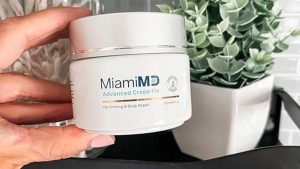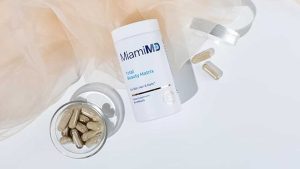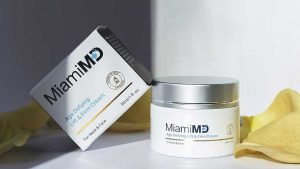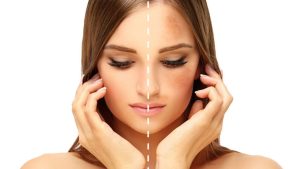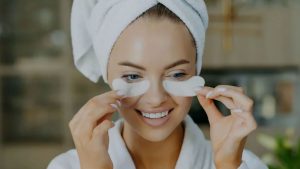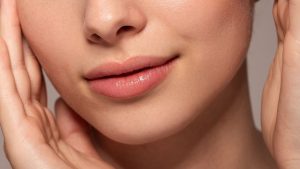What are Dark Spots?
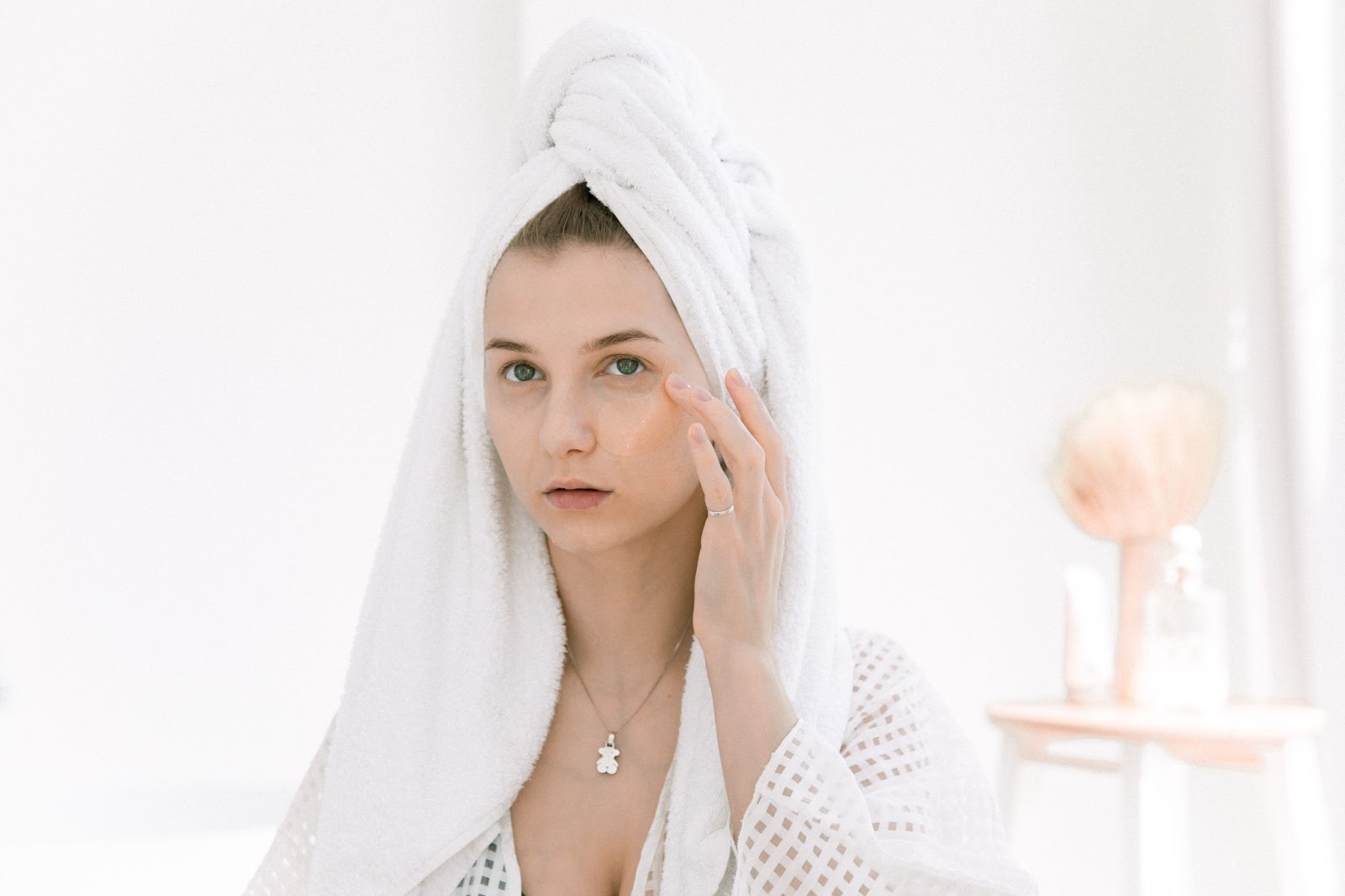
Many noticeable changes occur in the skin as we age, but one of the most frustrating is dark spots. These noticeable brown spots seemingly appear out of nowhere and are most commonly observed on the face, shoulders, backs of the hands, tops of the feet, and upper back.
While you can develop dark spots at any age, they are commonly associated with aging and can make you look older than you are. If you’re noticing changes in your skin and are wondering how to get rid of dark spots, we have your complete guide to dealing with these troublesome signs of aging.
Causes of Dark Spots
Dark spots on the skin commonly start to appear as people get older. Dark spots have many different names, including sun spots, liver spots, age spots, and wisdom spots, but they all refer to the same characteristic of the skin. These spots start to pop up due to the overproduction of melanin in the skin. Melanin is the substance that gives your skin its color, and it is produced by melanocytes, which are cells that are designed to absorb sunlight.
That’s why when you spend more time in the sun, your skin gets darker; your melanocytes are absorbing sunlight and producing extra melanin. Regardless of how light or dark your skin is, you have about the same amount of melanocytes as everyone else. However, people with darker skin have more melanosomes, containing the pigment that gives your skin its color.
For this reason, people with lighter skin are more likely to develop noticeable dark spots as they age, with an estimated 75 percent of Caucasian people over the age of 60 experiencing dark spots.
Although many people equate dark spots to sun exposure, there are four different reasons why these spots can occur:
- Sun exposure
- Genetics
- Hormonal changes
- Age
Sun Exposure
Sun exposure is one of the most common causes of dark spots. Unprotected sun exposure throughout our lives accumulates as we age, contributing to sun damage and the development of dark spots when melanin becomes clumped or is produced in large quantities.
People who have light skin are particularly susceptible to dark spots, as are people who have a history of frequent or intense sun exposure or sunburns. The use of commercial tanning beds and tanning lamps also increases your risk.
Genetics
Your genetic makeup can also influence your likelihood of experiencing dark spots and can play a role in determining how light or dark your spots become. If you have family members with dark, noticeable spots on different areas of their skin, you are more likely to develop dark spots as you age.
Hormonal Changes
Hormonal changes can also impact the development of dark spots or changes to skin pigment, particularly in women. For example, pregnant women may develop a darkening of certain areas of the skin, particularly on the upper lip, forehead, and cheeks. This condition, called melasma, occurs due to changing estrogen and progesterone levels in the body during pregnancy. However, women who take birth control pills can also develop melasma, as hormones also occur as part of the regular menstrual cycle.
Age
Dark spots are more likely to occur with age due to the accumulation of sun exposure over time and the breakdown of the skin’s barrier function, which naturally occurs with age. In addition, visible signs of aging in the skin occur as a result of decreased collagen and elastin production, as well as reductions of levels of CoQ10, an important antioxidant that helps protect the body from damage that occurs as a byproduct of cellular processes.
Symptoms of Dark Spots
With increasing awareness of the dangers of skin cancer, many people are more vigilant than ever about identifying strange new spots on their skin. You may not love how dark spots look, but they’re not dangerous, which is why it is important to be able to know how to identify dark spots and tell them apart from spots that could be potentially dangerous.
Dark spots have the following characteristics:
- Tan to dark brown
- Range in size from the size of a freckle to approximately half an inch across
- Flat (not raised) oval shape
- Most commonly occur in areas that receive regular sun exposure, such as the face, shoulders, upper back, hands, and feet
- It may be grouped
If you aren’t sure whether a new spot on your skin is a dark spot or might be something potentially dangerous, make sure to check in with your doctor if you notice any of the following characteristics:
- Black color
- Irregular border
- Bleeding or oozing
- Increasing in size over time
- It has an unusual color combination that is uncharacteristic of a freckle or dark spot.
How to Get Rid of Dark Spots
There are several different ways to get rid of dark spots. While dark spots are not dangerous, many people want to remove them for cosmetic reasons and to appear younger. Unfortunately, it’s more challenging to decrease existing dark spots than prevent them from occurring in the first place, but there are still several treatment options.
Lightening Creams
One of the easiest and most cost-effective ways to get rid of dark spots is by using a skin-lightening cream that contains ingredients like vitamin C and glycolic acid. Skin lightening creams can not only help to lighten the dark spots on your skin, but they can also help prevent new spots from developing, resulting in a brighter, more even skin tone no matter how old you are.
Cryotherapy
Cryotherapy is a type of cosmetic procedure that freezes the dark spots off of your skin, causing them to fall off. However, this method can only be performed safely in a doctor’s office and isn’t always effective, as some people end up with permanent white spots or, even worse, dark spots.
Laser Treatments
Laser treatments like IPL (intense pulsed light) therapy can also help to remove dark spots from the skin. These treatments use lasers to attack the dark spot’s pigment, which ultimately destroys it and causes the body to reabsorb the pigment. Laser treatment is expensive and best performed in a doctor’s office to ensure that it is done correctly.
Prescription Treatments
Prescription creams are also available for the treatment of dark spots. These creams contain high doses of an ingredient called retinoids, which stimulate collagen production and improve cell turnover, improving the appearance and texture of the skin.
However, in contrast, creams containing retinoids can be purchased over the counter, prescription treatments contain higher doses of retinoids. As a result, they can be potentially irritating to the skin, requiring patients to be under a doctor’s care while using them.
Chemical Exfoliators
Chemical exfoliators are products that use different types of acid to break the bonds in the top layer of skin cells, revealing the healthier, brighter skin underneath. Many chemical exfoliators can be purchased over the counter, but there are also prescription-strength exfoliators available. Chemical exfoliators are very effective, but they can also be irritating to sensitive skin, and they should only be used occasionally.
How to Prevent Dark Spots
The best way to prevent dark spots is to be extremely strict about limiting your sun exposure as much as possible and protecting your skin whenever you are outdoors. Everyone should use a broad-spectrum sunscreen with a sun protection factor (SPF) of at least 30 every day and reapply the sunscreen every two to three hours throughout the day. Many people don’t realize that daily activities like driving your car on your commute to work, watching your child’s soccer practice or running errands expose your skin to the sun, and this exposure adds up over time.
If you are hesitant to add another step to your morning routine, consider using a moisturizer or cosmetics that already contain sunscreen so that you don’t have to worry about incorporating another product into your busy morning.
Summary
Dark spots are a frustrating but common sign of aging. Dark spots commonly occur due to unprotected sun exposure, aging, hormonal changes, and genetics. Characterized by their flat, oval appearance in varying shades of brown, dark spots are not dangerous but can be a blow to your self-esteem.
Fortunately, there are many different options for treating dark spots, including skin lightening creams, cryotherapy, laser treatments, prescription treatments, and chemical exfoliators. If choosing an over-the-counter skin lightening cream, make sure you choose a dark spot corrector that contains ingredients that are known to help reduce the appearance of dark spots, such as vitamin C and glycolic acid.
Sources:
Melasma: Diagnosis and Treatment | AAD
